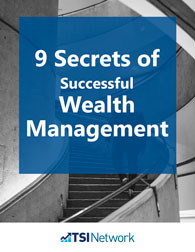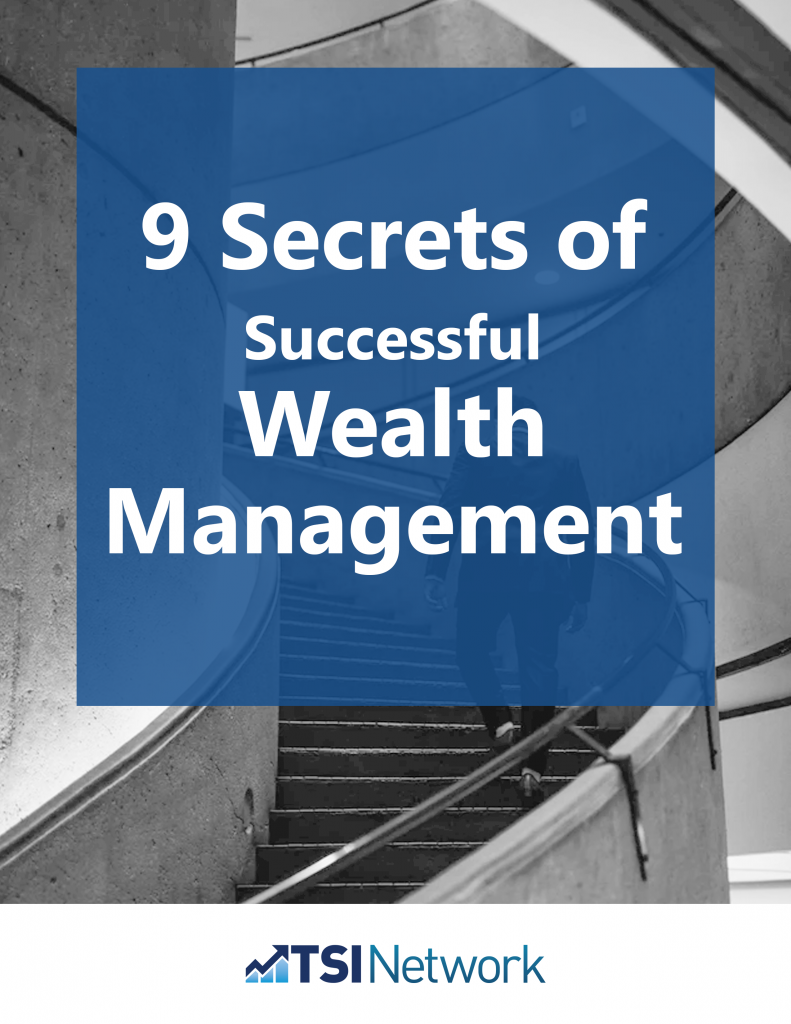Topic: Wealth Management
Retirement investing: It’s never too early to start planning
What is retirement investing?
Retirement investing is the process of investing money in stocks or other securities, often with the goal of using the funds to pay for living expenses in retirement.
One of the things that investors of all ages fear is that they won’t have a good financial plan in place so that they have enough retirement income to live on once they’ve stopped working. Addressing this concern is usually a high priority for many of our Successful Investor Portfolio Management clients.
 Invest in your Financial Future for FREELearn everything you need to know in '9 Secrets of Successful Wealth Management' for FREE from The Successful Investor. Secrets of Successful Wealth Management: 9 steps to the life you've always wanted, before and after retirement. |
To alleviate this worry, we recommend to them—and you—that you base your retirement planning on a sound financial plan. Here are the four key variables that your plan should address to ensure you have sufficient retirement income:
- How much you expect to save prior to retirement;
- The return you expect on your savings;
- How much of that return you’ll have left after taxes;
- How much retirement income you’ll need once you’ve left the workforce.
Most accountants or tax preparers can do the math for you, based on numbers you provide. However, coming up with realistic numbers is the hard part. That’s because in part, it depends on your personal preferences.
For instance, a financial planner can give you some idea of what others are saving. But you should base your savings on the way you want to live, rather than on the averages. You also need a realistic view of how much retirement income you’ll need once you’ve stopped working.
Here’s a tip for something you should begin before you retire. You start by doing a detailed study of how you spend your money now. Then, you analyze your findings to see what personal expenses you can cut or eliminate. This too can have fringe benefits, especially if it helps you break unhealthy and expensive habits, like smoking.
How to use RRSPs and RRIFs to add to your long-term investing success
RRSPs (Registered Retirement Savings Plans) are a great way for investors to cut their tax bills and make more money from their retirement investing. RRSPs are a form of tax-deferred savings plan. RRSP contributions are tax deductible, and the investments grow tax-free. (Note that you can currently contribute up to 18% of your earned income from the previous year. March 1 is the last day you can contribute to an RRSP and deduct your contribution from your previous year’s income.
When you later begin withdrawing the funds from your RRSP, they are taxed as ordinary income.
If you want to pay less tax on dividends, interest and capital gains while you’re still working, investing in an RRSP is the way to go.
Registered Retirement Income Funds (RRIFs) are also a great long-term retirement investment planning strategy.
Converting your RRSP to a RRIF is clearly one of the best of three alternatives at age 71. That’s because RRIFs offer more flexibility and tax savings than annuities (see the pros and cons of annuities at TSI Network) or a lump-sum withdrawal (which in most cases is a poor retirement investing option, since you’ll be taxed on the entire amount in that year as ordinary income).
Like an RRSP, a RRIF can hold a range of investments. You don’t need to sell your RRSP holdings when you convert—you just transfer them to your RRIF.
When you hold a RRIF, you must withdraw a minimum each year and report that amount for tax purposes. (You may withdraw amounts above the minimum at any time.) Revenue Canada sets your minimum withdrawal for each year according to a schedule that starts at 5.28% of the RRIF’s year-end value at age 71, reaches 6.82% at age 80, and levels off at 20% at age 95.
If you have one or more RRSPs (registered retirement savings plans), you’ll have to wind them up at the end of the year in which you turn 71.
4 tips to make the most of your tax savings when undergoing the RRSP to RRIF conversion process:
-
- Use a younger spouse’s age to set a lower minimum withdrawal: For example, if your spouse is 65 when you turn 71, then the minimum withdrawal set by Revenue Canada is 4.00%, rather than 5.28%. The rate increases yearly until it reaches 5.28% when your spouse turns 71. It then follows the normal schedule, reaching 6.82% when your spouse reaches 80, and levelling off at 20% at age 95.
- Stick with late-in-the-year payments: You start making withdrawals from your RRIF in the year following the year in which the RRIF is established. For example, if you open a RRIF in 2020, you have to make your first withdrawal by December 31, 2021. You can receive RRIF payments on any schedule, though most investors choose to receive them either monthly or yearly. Unless you need monthly payments to live on, it’s best to request only one payment per year, near year-end, to prolong your tax deferral. For practical purposes, however, set a date such as December 15 to allow for delays. Just contact the broker or institution that holds your RRIF to set up your yearly payment.
- Withdraw shares instead of cash: Keep in mind that you don’t need to make your minimum withdrawal in cash. Instead, you may make an “in-kind” withdrawal of shares instead of cash.
- Name a RRIF beneficiary: Assets in a RRIF automatically pass on to your beneficiaries in the event of your death. If you name your spouse or a financially dependent child under 18 as beneficiary, assets are passed on tax-free to their RRIF or RRSP.
Using bonds for retirement will hurt your retirement income
As some investors near retirement, their advisors recommend switching to bonds and other fixed-income investments for their retirement investments instead of holding stocks or ETFs.
To some extent, this is an understandable retirement investing strategy, since bonds can provide steady income and a guarantee to repay their principal at maturity.
Unfortunately, using bonds for retirement may not be the best strategy. Bond prices will likely fall over the next few years because interest rates are likely to rise. Bond prices and interest rates are inversely linked. When interest rates go up, bond prices go down, when interest rates go down, bond prices for up.
Bonds have been in a period of rising prices (a bull market) more or less since 1981. That year, long-term interest rates reached an historic turning point when long-term U.S. Treasury bond yields peaked near 15%. Ever since, interest rates have gone through wide fluctuations, but they have essentially headed downward.
Today, interest rates are likely to go higher. Remember, as mentioned, when interest rates go up, bond prices drop.
3 ways Canadian annuities can hurt your retirement investing
Stable, predictable income is a plus for any retirement plan. However, annuities do have disadvantages that can lower your overall retirement investing income.
Here are 3 key drawbacks you should keep in mind when deciding whether annuities are right for you:
- Link to interest rates makes today a poor time to buy annuities: The rate of return you receive on an annuity is linked to interest rates at the time you buy it. That makes periods of low interest rates, like today, an especially poor time for buying annuities. However, if you want to buy annuities, you could buy one annuity a year for the next five years. That way, your returns will increase if interest rates rise, as we expect.
- It may be hard to get out if you change your mind: Unlike stocks, it can be difficult or impossible to sell an annuity if you decide it no longer meets your needs. Moreover, you will likely get a low price for your annuity because the date of your death is uncertain.
- Tax treatment: When you own an annuity, the income payments you receive are made up of interest and a return of your principal. The return of your principal is tax free, but the interest portion of the payment is taxed as ordinary income.
Ordinary income is taxed at a higher rate than returns on a stock portfolio. If you build your retirement investing portfolio as we recommend, part of your return would come in the form of dividends from Canadian stocks, which qualify for the dividend tax credit. The remainder would come in the form of capital gains, which are taxed at half the rate of ordinary income, and are only taxed in the year you sell.
Follow our three-part Successful Investor strategy
Limit your risk by investing in most if not all of the five main economic sectors. Also, follow our three-part Successful Investor strategy:
- Invest mainly in well-established, dividend-paying companies;
- Spread your money out across most if not all of the five main economic sectors (Manufacturing & Industry; Resources & Commodities; the Consumer sector; Finance; Utilities);
- Downplay or avoid stocks in the broker/media limelight.
Have you used any of these tips for easy investments for beginners? Do you have additional tips to add? Share your thoughts with us in the comments.




This article has neglected TFSAs which is what everyone who already has a pension plan or is at the beginning years of their earning lives should use to the maximum possible. The article also fails to mention that RRIF withdrawals attract no tax for the first $ 2,000 of income so that gives RRSP investing in the higher earning years ( the only time RRSPs should be used ) an added benefit.